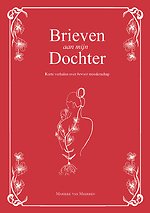Elements of Style, The
Paperback Engels 1999 9780205309023Samenvatting
Some acclaim for previous editions:
"Buy it, study it, enjoy it. It's as timeless as a book can be in our age of volubility."
— The New York Times
"No book in shorter space, with fewer words, will help any writer more than this persistent little volume."
— The Boston Globe
"White is one of the best stylists and most lucid minds in this country. What he says and his way of saying it are equally rewarding."
— The Wall Street Journal
"The book remains a nonpareil: direct, correct, and delightful."
— The New Yorker
". . . Should be the daily companion of anyone who writes for a living, and for that matter, anyone who writes at all."
— Greensboro (N.C.) Daily News
"This excellent book, which should go off to college with every freshman, is recognized as the best book of its kind we have."
— St. Paul Dispatch – Pioneer Press
"It's hard to imagine an engineer or a manager who doesn't need to express himself in English prose as part of his job. It's also hard to imagine a writer who will not be improved by a liberal application of The Elements of Style."
— Telephone Engineer & Management
Specificaties
Lezersrecensies
Inhoudsopgave
INTRODUCTION.
I.ELEMENTARY RULES OF USAGE.
1.Form the Possessive Singular of Nouns by Adding 's.
2.In a Series of Three or More Terms with a Single Conjunction, Use a Comma after Each Term except the Last.
3.Enclose Parenthetic Expressions between Commas.
4.Place a Comma before a Conjunction Introducing an Independent Clause.
5.Do Not Join Independent Clauses with a Comma.
6.Do Not Break Sentences in Two.
7.Use a Colon after an Independent Clause to Introduce a List of Particulars, an Appositive, an Amplification, or an Illustrative Question.
8.Use a Dash to Set Off an Abrupt Break or Interruption and to Announce a Long Appositive or Summary.
9.The Number of the Subject Determines the Number of the Verb.
10.Use the Proper Case of Pronoun.
11.A Participial Phrase at the Beginning of the Sentence Must Refer to the Grammatical Subject.
II.ELEMENTARY PRINCIPLES OF COMPOSITION.
12.Choose a Suitable Sesign and Hold to It.
13.Make the Paragraph the unit of Composition.
14.Use the Active Voice.
15.Put Statements in Positive Form.
16.Use Definite, Specific, Concrete Language.
17.Omit Needless Words.
18.Avoid a Succession of Loose Sentences.
19.Express Coordinate Ideas in Similar Form.
20.Keep Related Words Together.
21.In Summaries, Keep to One Tense.
22.Place the Emphatic Words of a Sentence at the End.
III.A FEW MATTERS OF FORM.
IV.WORDS AND EXPRESSIONS COMMONLY MISUSED.
V.AN APPROACH TO STYLE (WITH A LIST OF REMINDERS).
1.Place Yourself in the Background.
2.Write in a Way That Comes Naturally.
3.Work From a Suitable Style.
4.Write with Nouns and Verbs.
5.Revise and Rewrite.
6.Do Not Overwrite.
7.Do Not Overstate.
8.Avoid the Use of Qualifiers.
9.Do Not Affect a Breezy Manner.
10.Use Orthodox Spelling.
11.Do Not Explain Too Much.
12.Do Not Construct Awkward Adverbs.
13.Make Sure the Reader Knows Who is Speaking.
14.Avoid Fancy Words.
15.Do Not Use Dialect Unless Your Ear Is Good.
16.Be Clear.
17.Do Not Inject Opinion.
18.Use Figures of Speech Sparingly.
19.Do Not Take Shortcuts at the Cost of Clarity.
20.Avoid Foreign Languages.
21.Prefer the Standard to the Offbeat.
Afterword.
Glossary.
Vaak samen gekocht
Anderen die dit boek kochten, kochten ook
Rubrieken
- advisering
- algemeen management
- coaching en trainen
- communicatie en media
- economie
- financieel management
- inkoop en logistiek
- internet en social media
- it-management / ict
- juridisch
- leiderschap
- marketing
- mens en maatschappij
- non-profit
- ondernemen
- organisatiekunde
- personal finance
- personeelsmanagement
- persoonlijke effectiviteit
- projectmanagement
- psychologie
- reclame en verkoop
- strategisch management
- verandermanagement
- werk en loopbaan








